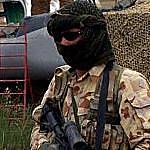Hi Alex
In my opinion Tamiya putty is very good , but anyway when the gap is large (more than 0,3 mm) I have several methods to fill it
First of all, if the gap position allows me to do it, I put in the the gap filled sprues or plastcard strips-thin roads. I wet it with tamiya thinner glue and I wait that they cured completely. After them I sand it and I apply a thin coat of Mr surfacer (500 or 1000 it depends on the surface smothness ). After them I sand it again and finally I polish with Tamiya polishing compound (Coarse grain). When the gap is large, applying only the putty could be not strong enough . In fact plastic and putty have different behaviours. Plastic is more elastic than putty. During the time or during the mounting phases putty could crack it. But if you put plastic in the gap you can avoid this problem.
Another method which I adopt consists in the use of Faller expert glue.

This glue melt strongly the plastic and tend to form a sort of plastic "sausage". This seems to be an issue but actually is an advantage because this seam weld replaces in a fantastic way the putty. So I aplly the glue on the contact surfaces (a LITTLE bigger amount than usual) and using rubber bands or clamps, I strongly bond the parts each other. If I do all in a right way the seam weld will go out. After then I Wait that the glue is perfectly cured (be careful...WELL CURED) and then I remove the seam weld with a very sharp blade. The gap usually disappears this way and you need just to sand it and polish a little bit. Sometime to fill few little dents, It could be necessary an aplication of Mr surfacer 1000
The third method which I use, consists in an application of White Milliput . I adopt this method when I have to prevent panel lines. The advantage is that you can smooth it with a cotton swab damp in water or alcohol
I don't use ca glue because i've noticed that is hard to sand it. Cured ca is harder than plastic so passing on it the sand paper you risk to damage the parts without smoothing it .Just my opinion anyway
cheers





















































